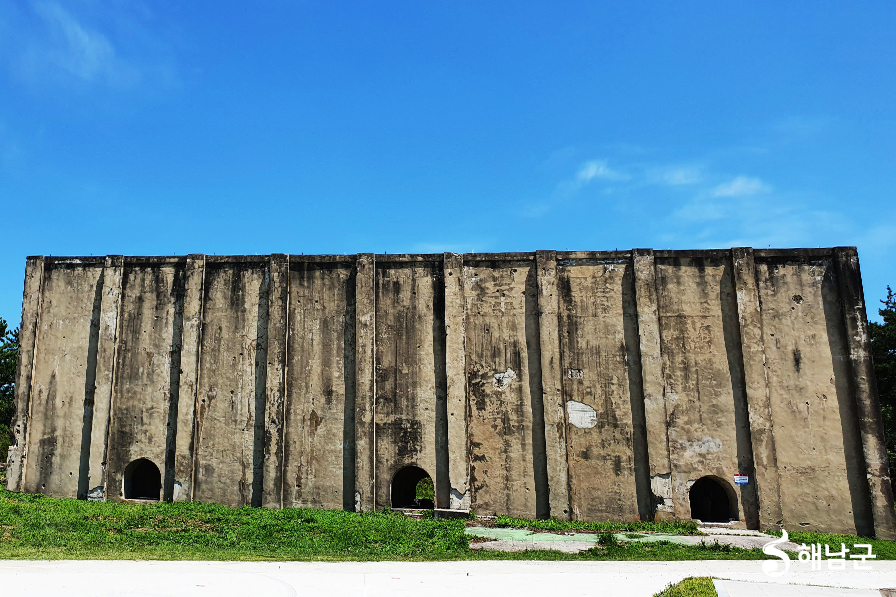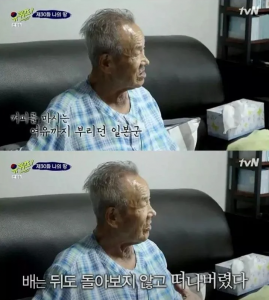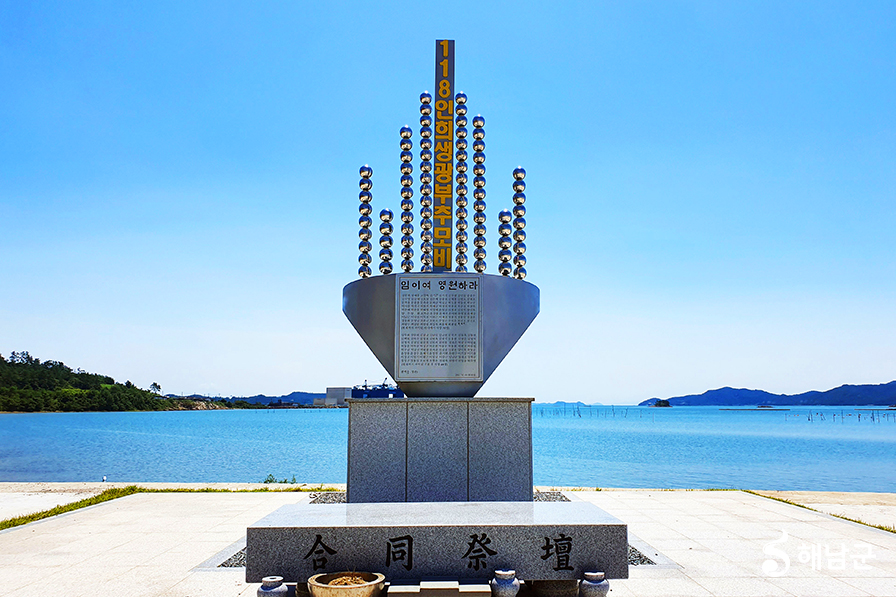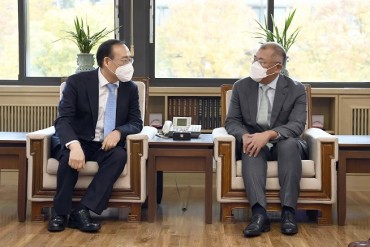
While Japan’s Gunkanjima and Russia’s Sakhalin are well-known examples of forced mobilization during the Japanese colonial period, there is little awareness about the domestic areas that were also affected. The Okmae mine, where raw materials for military supplies such as airplanes were mined, was of particular interest to the Japanese. YTN reported that up to 1,000 Koreans were once mobilized to work there. (Image courtesy of the official blog of Haenam Ttangkkeut Village)
SEOUL, March 7 (Korea Bizwire) — On August 13, 2019, a special episode of “You Quiz on the Block,” a popular Korean talk show and quiz program, was aired to commemorate Liberation Day and convey the heart-wrenching experiences of Korean patriots who suffered during the independence movement and Japanese colonial period.
The show’s hosts, Yoo Jae-seok and Cho Se-ho, visited Haenam Ttangkkeut Village, located on the southern tip of the Korean Peninsula. There, they paid tribute to the “Memorial Monument of 118 Victims” at the Okmae Mine, a representative forced labor site in Korea, where about 1,200 people were forced to work by the Japanese during the colonial era.
During the visit, the hosts met with Kim Baek-woon, the only remaining survivor of forced labor at the Okmae Mine. Kim shared his harrowing experience of being forced to work in a large cave, which served as the Japanese military’s defense line to fight against the Allies.
He also vividly remembered a tragic incident that occurred following Korea’s independence. He recounted how about 250 people, including himself, were heading home when their boat caught fire, causing them to evacuate the vessel. While five Japanese people were rescued by boat, the remaining passengers were left to fend for themselves, resulting in the miserable deaths of 118 Koreans.
 The show’s hosts asked Kim if he had any message for the younger generation, to which he responded, “What are the current adults qualified to say? We’re not acting like adults. I hope young people don’t look like us.”
The show’s hosts asked Kim if he had any message for the younger generation, to which he responded, “What are the current adults qualified to say? We’re not acting like adults. I hope young people don’t look like us.”
On March 6, 2023, the Korean government announced a “third-party repayment” plan to pay compensation to victims of forced mobilization in the Japanese colonial era. The plan did not include an apology from the Japanese government or the participation of companies accused of forced labor in compensation.
Critics have called the plan a diplomatic humiliation that disregards the legal rights of victims achieved through legal battles for many years. Japan has denied the existence of forced mobilization and sexual slavery perpetuated by the Japanese military, and even the existence of Kim Baek-woon.

This monument is dedicated to the memory of the 118 victims who were unable to return to their hometowns. It is said that the labor demands placed on the Koreans forced to work in the mines were so severe that the mountain peak collapsed under the strain. This monument stands as a testament to the sacrifices made by those who endured such difficult conditions. (The official blog of Haenam Ttangkkeut Village)
The announcement has resulted in a backlash from the public, with many victims feeling that justice has not been served. Yang Geum-deok, a 95-year-old survivor of forced mobilization, expressed her anger, saying, “I won’t take it like this even if I starve to death.”
Political circles have criticized the government’s decision, calling it a violation of the rule of law and ignoring the Supreme Court’s ruling that Japan’s domination of the Korean Peninsula and Japanese companies’ anti-humanitarian mobilization are illegal.
In response, the ruling party emphasized the importance of focusing on future-oriented relationships and warned against blind anti-Japanese sentiment, which they claim could cause harm to the national interest.
This is consistent with President Yoon Seok-yul’s comments in the commemorative speech on March 1st Independence Movement Day, which emphasized the need to break free from the past and concentrate on developing forward-looking relationships.

The image shows Chosun girls arriving at Nagoya aircraft factory (image courtesy of ‘Children Mobilized During the Asia-Pacific War in Joseon’, written by Chung hye-gyung, published by Seom&Seom)
YTN reported that even young children in Korea were forcibly mobilized during the Japanese colonial period. The investigation committee for forced mobilization of the Korean War reported in 2013 that 1,073 people died while working at military facilities on the Korean Peninsula. The youngest victim was just 10 years old, and 32 were under 14 years old, according to the committee’s findings.
Jerry M. Kim (jerry_kim@koreabizwire.com)






